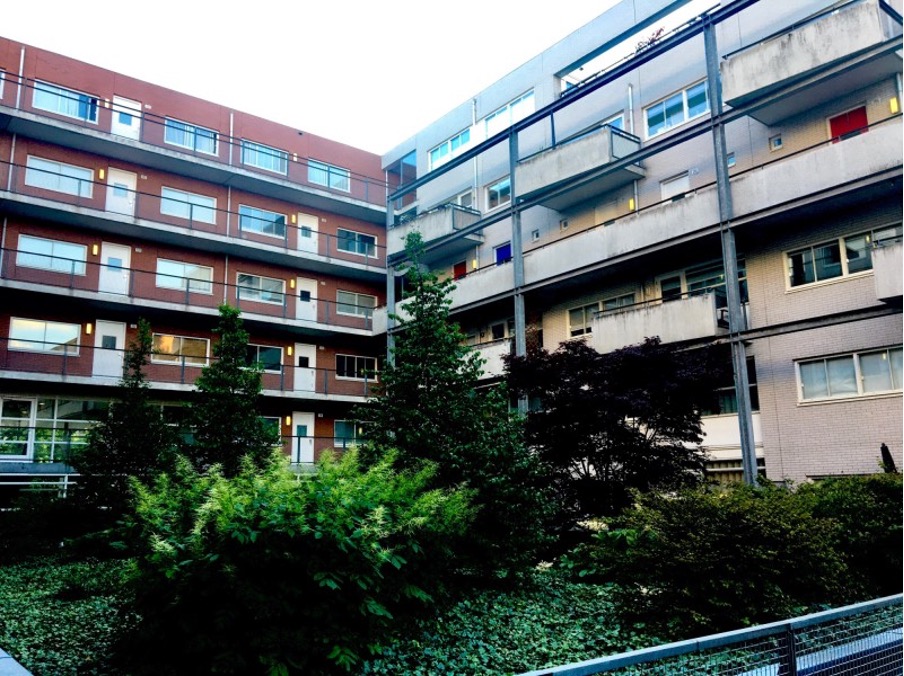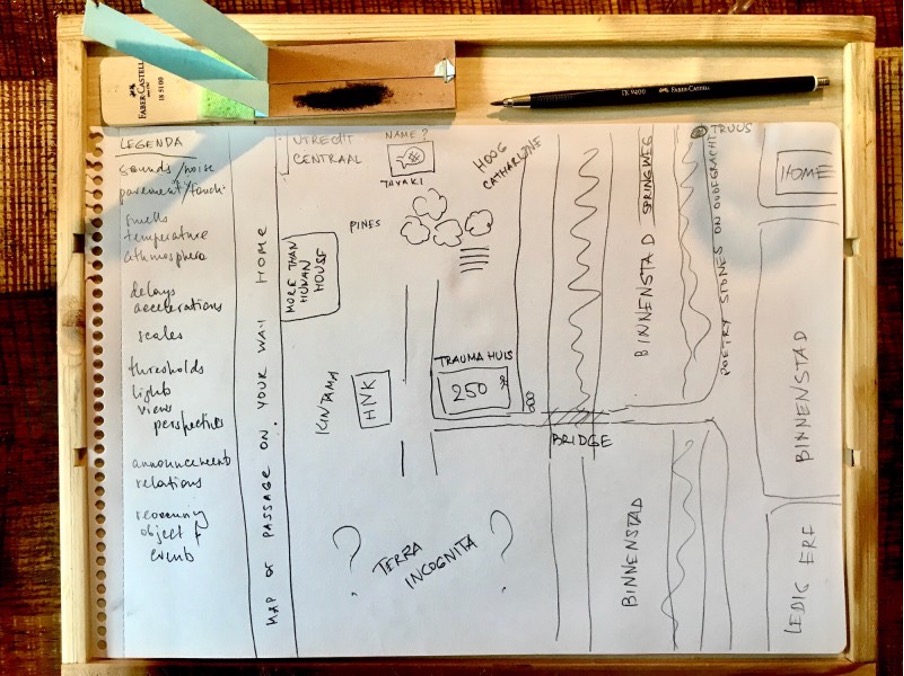Seminar Blogs
Walking with the Trouble: Haunted Landscapes, Trauma Maps and Memory Landmarks – Olga Efremova

My natural response to the challenge set by Liesbeth Groot Nibbelink and Anne Karin ten Bosch in the final session of this year’s TiM seminar series to explore methods of drawing, the ‘soft atlas’ and performative mapping (Utrecht University 2022) was to venture outside with a drawing pad and pencil in my hand. Acting out on this impulse, however, became complicated as I pondered which one of the multitudes of the potential walking paths between my house and Utrecht Central station I should take. In time honoured fashion of taking “the road less travelled”, I have decided to take the route that I do not walk to often as it passes the sites of personal memories that I would not want to relive: the frustrating time of loneliness and isolation as a carer for a challenging child with special needs who often was not welcome at playgrounds. I still walk this route from time to time, the truth is that I find many of its sights hauntingly beautiful, almost cinematic in their visual and affective quality.
There must certainly be a kind of transmission of affect at play, a translation of traumatic memories into lyrical and poetic melancholia that accompanies the eery feeling of being in a “haunted” space, walking with the trouble. As the time goes by, the haunting becomes less related to my personal memories, more abstract and contemplative. Mapping exercise revealed the tendency to focalise trivial objects and to award the with new meanings or significance. The resulting hand-drawn map (Figure 1) turned out to be not a representation of the territory but rather its figuration (Van der Tuin and Verhoeff 2022, 98): a process and product of introspective walking. Karin van Es and Michiel de Lange (2020) identify three related affordances of walking as a method: it is embodied, situated and generative (283). In her essay on the potential of autobiographical space drama and theatre scholar Alison Oddey remarks on the “interrelationships”: the shifting perspectives of the body and the spectator in relation to the theatre landscape of architecture, autobiographical space and performance. “The theatrical landscape outside of the theatre building requires a willingness to be silent in order to expose the passing of time” (48). Silent introspection is a performative act set against the backdrop of urban scenography, an exploratory theatre for one that has a “potential futurity” (Van der Tuin and Verhoeff 2022, 98) of becoming a participatory theatre for many.

Figure 1. A scenographic walk map made during the workshop session
The challenge of translating the autobiographic theatre of mind to wider audience is both fascinating and intimidating as it requires making shared connections to the landmarks that carry deeply personal meaning. The place marked at the map as “Trauma House” has a small private garden patch in its inner yard. Every time I walk past, I had a haunting feeling that there is more to uncover as if the place had a ghost trapped in the grass and the leaves. I will have to come again to the mapped terrain to search for such a commonality and to answer the question: can an urban allotment become a site of cultural memory? Perhaps the story of that ghost will gradually emerge in the course of the next year’s TiM seminars.
References
Es, Karin van, and Michiel de Lange. “Data with Its Boots on the Ground: Datawalking as Research Method.” European Journal of Communication 35, no. 3 (June 2020): 278–89. https://doi.org/10.1177/0267323120922087.
Oddey, Alison. 2006. “Different Directions: The Potentials of Autobiographical Space.” In The Potentials of Spaces: The Theory and Practice of Scenography and Performance, edited by Alison Oddey and Christine White, 33-50. Bristol: intellect.
Utrecht University. 2022. “From Scenography to Landscape Design and back again” – Liesbeth Groot Nibbelink (UU) and Anne Karin ten Bosch. Transmission in Motion. Accessed June 29, 2022. https://transmissioninmotion.sites.uu.nl/from-scenograpy-to-landscape-design-and-back-again-liesbeth-groot-nibbelink-uu-en-anne-karin-ten-bosch.
Van der Tuin, Iris and Nanna Verhoeff. 2022. Critical Concepts for the Creative Humanities. London: Rowman & Littlefield International.
Images:
“The Haunted Gardens of Trauma House.” Photographed by Olga Efremova on June 10, 2022. Digital image. Private collection.
“The Map, Not the Territory.” Photographed by Olga Efremova on June 9, 2022. Digital image. Private collection.

